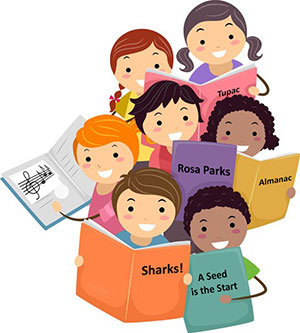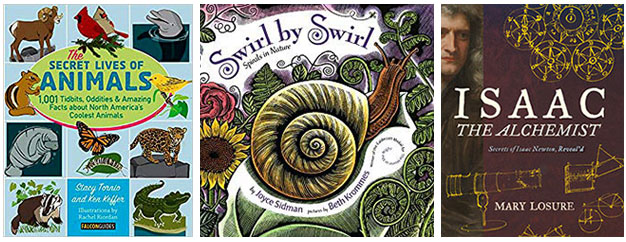 Personal preferences and experiences guide our life choices. They impact what we wear, eat, do, even the people we spend time with. It should come as no surprise, then, that personal preferences also affect what we read— maybe even whether we read.
Personal preferences and experiences guide our life choices. They impact what we wear, eat, do, even the people we spend time with. It should come as no surprise, then, that personal preferences also affect what we read— maybe even whether we read.
Studies show that young readers who feel a personal connection to what they are reading demonstrate better comprehension and derive greater enjoyment from their reading. They engage more thoroughly when they see ideas connecting to their own experiences and passions. In the case of nonfiction, personal connections help readers see science, facts, and events as meaningful to their lives.
Even the youngest readers have experiences, knowledge, opinions, and emotions they can tap when looking for personal connections to their reading. Good readers may find it easier to see connections, but with help, new or struggling readers can find connections, too. Choosing strong, well-crafted nonfiction is a good first step toward building connections. Intentionally guiding young readers to a discovery of how books connect to their lives completes the process.
Choosing good nonfiction
Today’s nonfiction books are kid-friendly and relatable. They explain difficult concepts clearly, simply, and without condescension. They are visually appealing, with attractive and accurate illustrations, page layouts that break up text, and strong design features.

Some nonfiction books are interactive and engaging. This is incredibly effective at building connections. They pose questions or include fun, little known facts. That’s the approach taken by Stacy Tornio and Ken Keffer in The Secret Lives of Animals — 1,001 Tidbits, Oddities & Amazing Facts about North America’s Coolest Animals.
Some books build on young readers’ already established knowledge as a way of connecting to new ideas. Swirl by Swirl: Spirals in Nature by Joyce Sidman is a great example of this. It explores the ways the spiral — a shape already familiar to young readers — occurs over and over in nature, thereby prompting a greater interest in the natural world.
Some books just tell a good storyvsomething we all tend to remember much better than abstract rules, formulas, and concepts. That’s the case with Mary Losure’s Isaac the Alchemist. Isaac Newton may have lived hundreds of years ago, but readers learn how similar some of Newton’s experiences were to those of kids today. They see Newton as being just like them and they want to follow him on his journey.
Establishing personal connections
Connection building occurs when young readers see books as relevant to their lives. And there’s plenty that’s relevant in the world of nonfiction. All that’s needed is a little prompting.
Teachers and librarians can help young readers see connections by asking questions like these:
- What were your feelings when you read this?
- Does anything in this story remind you of anything in your own life?
- Is what happened in this book something you’d like to do? Something you’d like to learn more about?
- How is this book similar to other things you have read?
- How is it different from other things you have read?
- What does this remind you of in the real world?
- Are the events in this story similar to or different from things that happen in the real world?
These questions can be used with any type of text, any age group, and at any stage of the reading experience. All young readers can benefit from them.

Finding meaningful connections in nonfiction helps young readers bridge the gap between current knowledge and new material. It allows readers to see themselves in new roles, have a clearer picture of historical events, become more actively involved in learning scientific theories, and more.
If we give young readers a purpose for their reading, they will be able to better comprehend and make meaning of the ideas presented. But perhaps most importantly, they’ll enjoy reading more. And that’s a tremendous outcome in and of itself — using personal experience to make reading a positive experience. Everyone wins!
Resources
Readwritethink: Making Connections Strategy Guide
Facing History: Text-to-Text, Text-to-Self, Text-to-World Handout
Making Connections: Text to Self, Text to Text, Text to World
